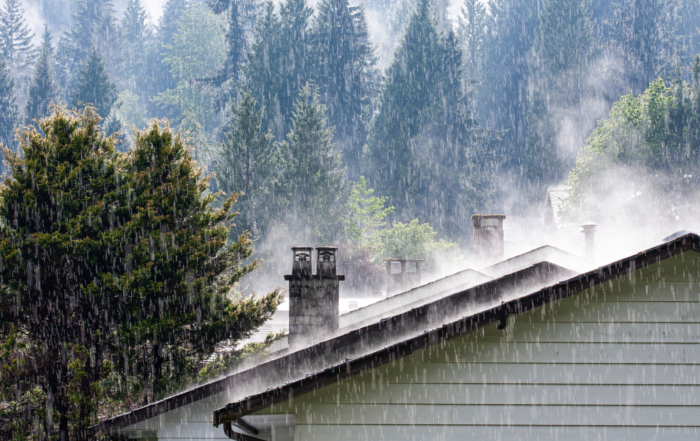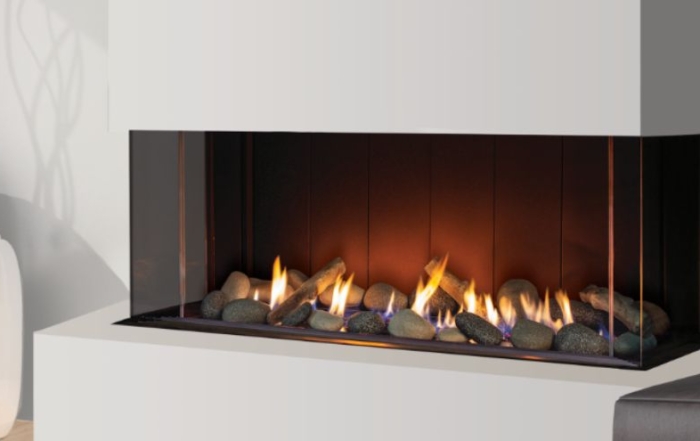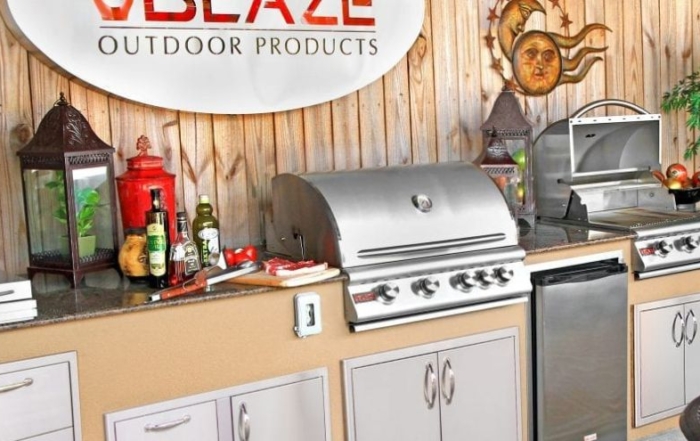BLOG
Lava Rock vs Fire Glass: Finding the Perfect Media for Your Fireplace
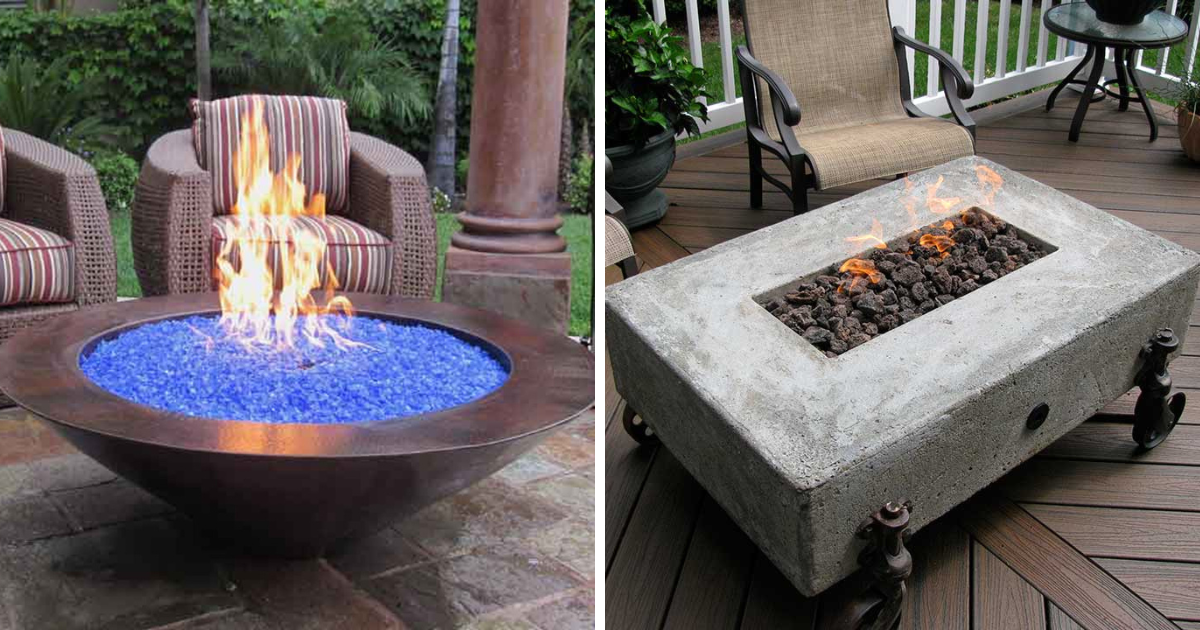
When it comes to creating an inviting and warm ambiance in your home, the choice of fire media can dramatically enhance your fireplace’s aesthetic, and functionality. In the world of fire features, lava rock and fire glass have emerged as two of the most popular options. While each has its unique charm, understanding their differences is crucial in determining which one aligns with your style and practical requirements. Here we compare lava rock and fire glass across various factors such as appearance, heat efficiency, durability and maintenance.
Key Differences
Material Origins & Appearance
Lava Rock: This naturally occurring volcanic material boasts a rustic, earthy charm. Its dark color palette complements outdoor environments seamlessly, offering a more traditional look.
Fire Glass: A product of human ingenuity, fire glass is made from tempered glass crafted into small, smooth pieces. Available in a spectrum of colors, fire glass allows for unparalleled customization and lends a contemporary flair to any setting.
Heat Efficiency & Maintenance
Lava rock shines in its ability to retain heat and radiate warmth long after the flames have died down, making it an outstanding choice for those chilly evenings outdoors. However, it can accumulate ash over time, demanding occasional cleanup.
Fire glass, on the other hand, keeps things clean and pristine, not producing any ash or soot, thereby minimizing maintenance efforts. Despite this, it falls slightly behind in heat retention compared to its natural counterpart.
Cost & Durability
When considering long-term investment, lava rock offers an economical solution due to its lower price point and robust composition that withstands the test of time without frequent replacements.
Conversely, fire glass carries a heftier initial price tag but dazzles with its lasting brilliance and ease of handling, although it may not be as enduring as lava rock under constant exposure to high temperatures.
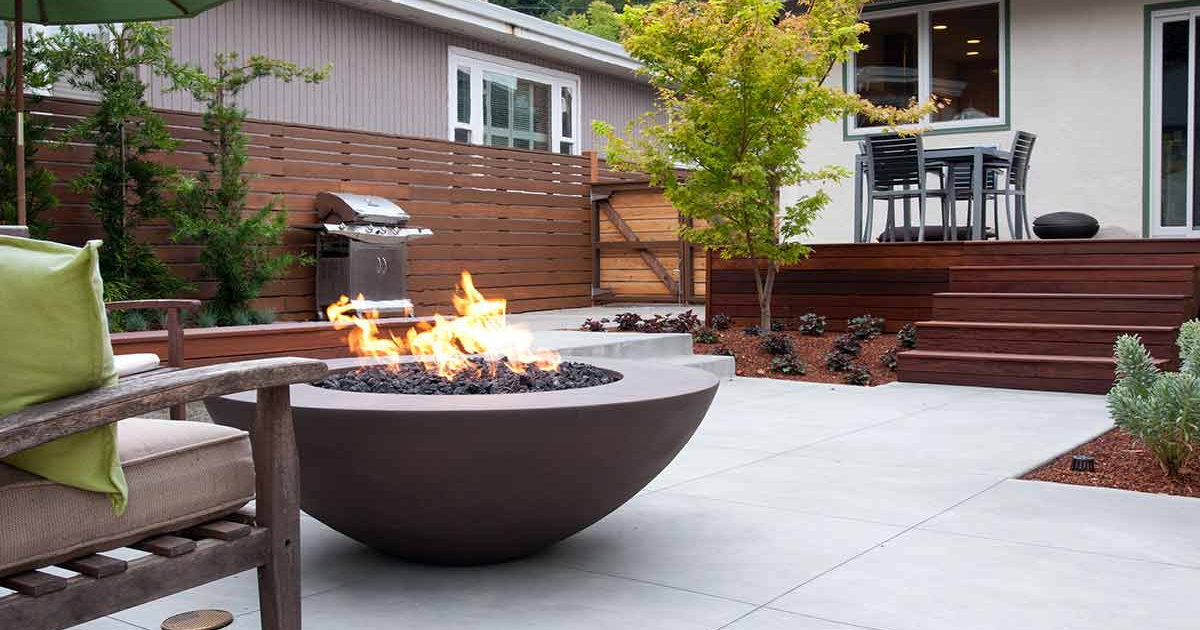
Pros and Cons
Lava Rock
Pros:
Eco-friendly and sourced from the earth.
Excellent at heat retention, perfect for outdoor use.
Cost-effective with great availability.
Durable, ensuring longevity with minimal maintenance.
Cons:
Limited color range, potentially not matching all design schemes.
Periodic cleaning required to remove ash buildup.
Heavy, making customization or relocation slightly cumbersome.
Fire Glass
Pros:
Wide variety of colors for full customization.
Clean burning without ash or soot, simplifying maintenance.
Light and easy to manipulate for design adjustments.
Modern aesthetic that elevates the look of any fire feature.
Cons:
Higher upfront costs.
Less effective in retaining heat, which might be a drawback in cooler climates.
May require replacements over time due to potential loss of luster.
Making Your Choice
Deciding between lava rock and fire glass boils down to your personal preferences, budget, and how you plan to use your fire feature. Lava rock suits those seeking a natural look and efficient outdoor heating solution without breaking the bank. On the flip side, fire glass offers a splash of color and a sleek, maintenance-free option at a higher price point, making it ideal for those prioritizing aesthetics and ease of use.
Regardless of your choice, both materials promise to create a captivating focal point in your outdoor space, providing warmth, ambiance, and countless memories under the stars.
BLOG
Lava Rock vs Fire Glass: Finding the Perfect Media for Your Fireplace

When it comes to creating an inviting and warm ambiance in your home, the choice of fire media can dramatically enhance your fireplace’s aesthetic, and functionality. In the world of fire features, lava rock and fire glass have emerged as two of the most popular options. While each has its unique charm, understanding their differences is crucial in determining which one aligns with your style and practical requirements. Here we compare lava rock and fire glass across various factors such as appearance, heat efficiency, durability and maintenance.
Key Differences
Material Origins & Appearance
Lava Rock: This naturally occurring volcanic material boasts a rustic, earthy charm. Its dark color palette complements outdoor environments seamlessly, offering a more traditional look.
Fire Glass: A product of human ingenuity, fire glass is made from tempered glass crafted into small, smooth pieces. Available in a spectrum of colors, fire glass allows for unparalleled customization and lends a contemporary flair to any setting.
Heat Efficiency & Maintenance
Lava rock shines in its ability to retain heat and radiate warmth long after the flames have died down, making it an outstanding choice for those chilly evenings outdoors. However, it can accumulate ash over time, demanding occasional cleanup.
Fire glass, on the other hand, keeps things clean and pristine, not producing any ash or soot, thereby minimizing maintenance efforts. Despite this, it falls slightly behind in heat retention compared to its natural counterpart.
Cost & Durability
When considering long-term investment, lava rock offers an economical solution due to its lower price point and robust composition that withstands the test of time without frequent replacements.
Conversely, fire glass carries a heftier initial price tag but dazzles with its lasting brilliance and ease of handling, although it may not be as enduring as lava rock under constant exposure to high temperatures.

Pros and Cons
Lava Rock
Pros:
Eco-friendly and sourced from the earth.
Excellent at heat retention, perfect for outdoor use.
Cost-effective with great availability.
Durable, ensuring longevity with minimal maintenance.
Cons:
Limited color range, potentially not matching all design schemes.
Periodic cleaning required to remove ash buildup.
Heavy, making customization or relocation slightly cumbersome.
Fire Glass
Pros:
Wide variety of colors for full customization.
Clean burning without ash or soot, simplifying maintenance.
Light and easy to manipulate for design adjustments.
Modern aesthetic that elevates the look of any fire feature.
Cons:
Higher upfront costs.
Less effective in retaining heat, which might be a drawback in cooler climates.
May require replacements over time due to potential loss of luster.
Making Your Choice
Deciding between lava rock and fire glass boils down to your personal preferences, budget, and how you plan to use your fire feature. Lava rock suits those seeking a natural look and efficient outdoor heating solution without breaking the bank. On the flip side, fire glass offers a splash of color and a sleek, maintenance-free option at a higher price point, making it ideal for those prioritizing aesthetics and ease of use.
Regardless of your choice, both materials promise to create a captivating focal point in your outdoor space, providing warmth, ambiance, and countless memories under the stars.

